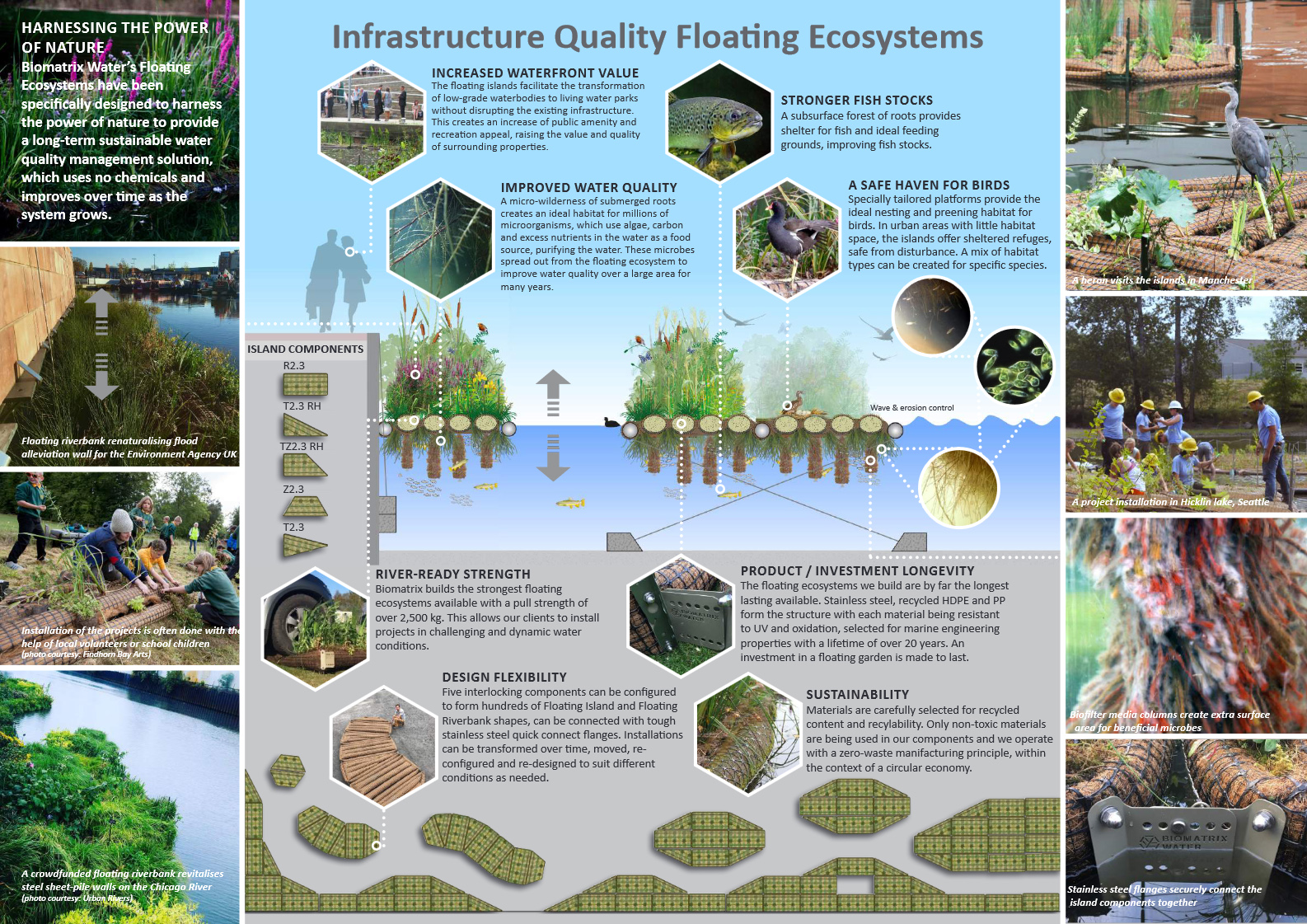Taiga Wetlands
Green Lake Floating Ecosystem
Demonstration Project
Introduction
In 2018, Friends of Green Lake (FOGL) received a large donation in memory of Taiga Hinckley, who was a valued employee at the Greenlake Boathouse Center but tragically did not survive an evening paddle on the lake. FOGL evaluated potential projects and selected the floating wetland project to best represent Taiga’s interest in protecting lake water quality and wildlife habitat. To supplement this and other donations with additional funds, FOGL applied for a Seattle Neighborhoods Matching Fund grand in September 2020 and won a $50,000 grant with our second application in September 2021. In addition to our well-planned design of exciting environmental restoration technology, keys to our grant success include first obtaining support from Seattle Parks and Recreation (SPR) and the Hydraulic Project Approval (HPA) permit from the Washington Department of Fish and Wildlife (WDFW).
FOGL carefully assembled a project leadership team of a dozen highly qualified volunteers to further develop the project design and plans, solicit proposals from two highly qualified floating wetland vendors, and select Biomatrix Water in Scotland to finalize the design and supply the Taiga Wetlands. The Taiga Wetlands design consists of two, 650-square-feet islands that will be permanently anchored west of Duck Island. The Duck Island location was selected over other locations because it provided the best habitat for native birds, which is our primary environmental objective. At this location, Taiga Wetlands will also function to sequester nutrients from the lake for uptake by the plants and, more importantly, the thick microbial biofilm growth on the plant roots, supporting a diverse macroinvertebrate community and fish habitat. In addition, this location provides good viewing of the wetlands from our education sign to be installed on the west shore and this more remote area of the lake reduces the potential for vandalism.
Work Plan
The project goal is to demonstrate and educate how floating wetlands are an effective tool for restoring impacted aquatic habitats in urban waters within the Puget Sound region. FOGL prepared the Taiga Wetlands Work Plan that includes wetland design and installation, planting, and monitoring and maintenance plans. The wetland modules are being shipped from Scotland and due to arrive in Seattle on about May 11, 2022 for storage at the Seattle Parks and Recreation Densmore Maintenance Facility. The project team will assemble, plant, and anchor the wetlands in Green Lake on Saturday and Sunday of Memorial Day Weekend May 28 and 29, 2022. See the Taiga Wetlands Flyer to share with others about the project.
Floating Wetlands Background
Floating treatment wetland systems (floating wetlands or floating ecosystems) are engineered, vegetated rafts made of natural or inert materials that mimic floating bog mats. Root systems of the planted vegetation extend deep into the water and become covered with a biofilm comprised of a variety of microbes (algae, bacteria, fungi, and protozoans).
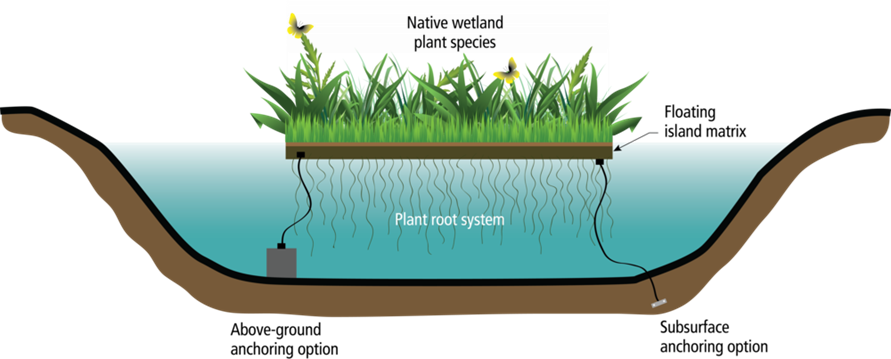
The biofilm grows rapidly, taking nutrients and other pollutants from the water, improving water quality by reducing the nutrient supply for phytoplankton growth, and hence reducing algae blooms. The biofilm also readily adsorbs toxic pollutants dissolved or suspended in the water. Ultimately, the biofilm sloughs and becomes incorporated into lake sediments. Some nutrients (approximately 20%) are also incorporated into the planted vegetation during active growth that become incorporated into the wetland media. Floating wetlands also reduce high water temperatures from shade. The degree of water quality improvement depends primarily on the floating wetland area in relation to the water body area, but also depends on nutrient concentrations, water currents, temperature, and dissolved oxygen.
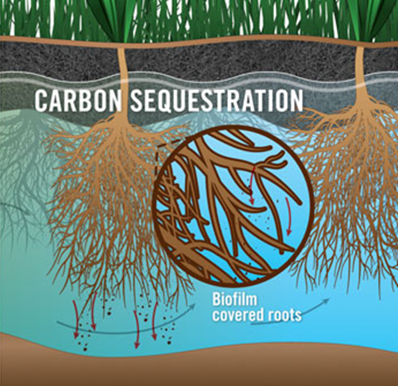
Floating wetlands also provide valuable habitat for fish and wildlife, particularly in urban water bodies lacking natural shoreline vegetation. Small fish seek refuge from predators and feed extensively on insects and other invertebrates that populate the underlying biofilm. Floating wetlands can be designed for waterfowl access using ramps, or for waterfowl exclusion using perimeter netting to protect planted vegetation and/or using plant species that are not a preferred waterfowl food source. Recent innovative designs include submerged platforms to create shallow water habitat above the plant matrix for juvenile salmonid rearing and optimum habitat for native bulrush species and other emergent vegetation historically used by Native Americans.
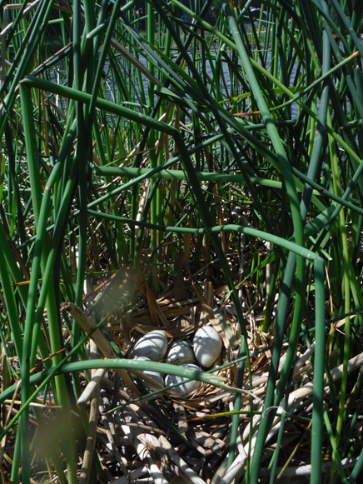
Floating wetlands offer several advantages over shoreline wetlands. Plant survival is higher because there is no lack of water since they are not affected water level fluctuation or drought. Plants are also less disturbed by foot traffic and vandalism since they can only be accessed by boat. It is much less expensive to expand wetland habitat using floating wetlands than constructing shoreline wetlands. Floating wetlands are also used as breakwaters to reduce shoreline erosion or bulkhead undermining, including some in the Gulf of Mexico that have survived hurricane winds and waves.
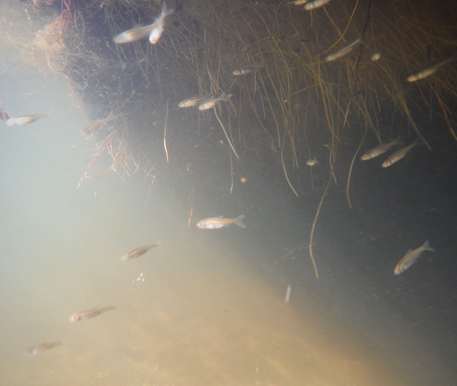
Floating islands are not a new technology, but they have not been used very often in the Pacific Northwest. Those installed in Washington State’s public lakes have been to decrease water temperature and nutrients, but not the occurrence of toxic algal blooms. Floating islands have been used in other areas throughout the world, most often in stormwater detention ponds, sewage treatment lagoons, and urban canals for nutrient removal to inhibit algal blooms. Multiple studies have shown that floating wetlands have been shown to be effective in reducing high nutrient concentrations in stormwater detention ponds (e.g., Headley and Tanner, 2011; White and Cousins, 2013; Wang and Sample, 2014). Limited water quality effectiveness data are available for floating wetland treatment systems in natural lakes or other water bodies. Even lakes with nuisance algal blooms typically have nutrient concentrations substantially lower than in sewage-contaminated canals or stormwater detention ponds. Although inconclusive, three years of monitoring data collected from Hicklin Lake after the installation of two small floating wetlands indicated that the wetlands were too small to significantly reduce nutrient or algae concentrations (King County 2018).
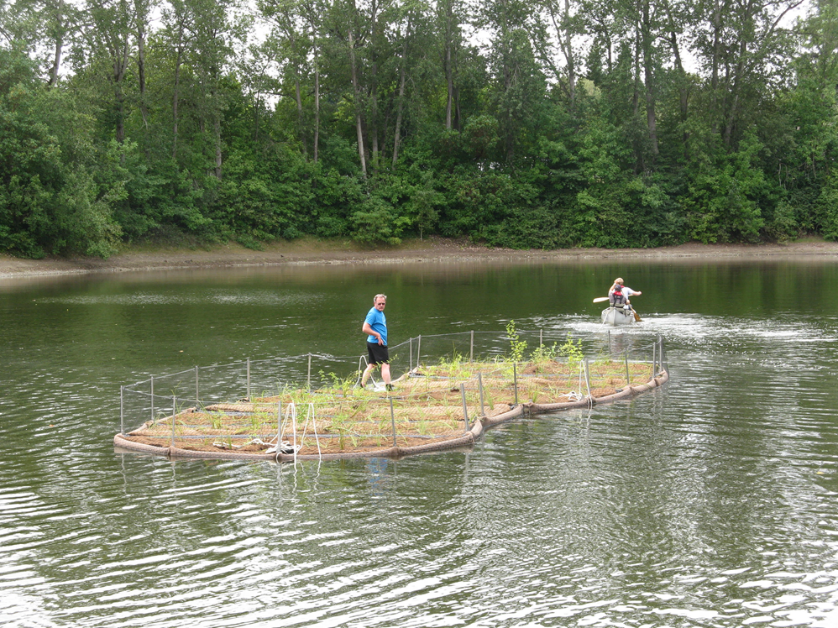

Click on the graphic above for a larger view of the Infrastructure Quality Floating Wetlands.
Posts About the Taiga Wetlands
Taiga Wetlands - Green Lake Floating Ecosystem Demonstration Project Update
SUCCESS!
Taiga Wetlands were successfully installed on Saturday May 28, 2022 by a team of about 40 volunteers. It was an incredible accomplishment to transport, assemble, plant, launch, and anchor the two 680 square-foot floating wetlands in One Day by volunteers who mostly had not done this nor even seen floating wetlands before. You can see them anchored west of Duck Island along with all the nesting ducks and resting great blue heron.
Many thanks go to Galen Fulford from Biomatrix Water for making the trip from Scotland to direct our efforts, which could not have been done without the hard work by our volunteers and with inspiration from Taiga. Be sure to see the project newsletter by Biomatrix with photos and a 1-minute video of the installation.
You can save the link to the Biomatrix Water newsletter and video of the Taiga Wetland Project: https://www.biomatrixwater.com/news/green-lake-seattle-taiga-wetlands/
A huge thanks to Sean Hermes and Seattle Parks and Recreation staff for storing and transporting the wetland materials to the lake, supplying wood chips and gravel, and providing foot traffic control during installation. We are thankful for Go Natives Nursery! providing most of the 1,090 plants at a great price and for being able to more than double our order on a Saturday when we realized we had greatly under-planned plant density. Thanks to Taiga’s family for supporting volunteer efforts and to the many Herrera staff who contributed to project design, planning, and installation.
This project was made possible by many private donations and a $50,000 grant from the Seattle’s Neighborhood Matching Fund. We need to raise about $6,000 more to supplement our material costs and provide sufficient funds for long-term maintenance and monitoring. Please help fund our project by contributing a tax-deductible donation. Send a check payable to Friends of Green Lake to:
Treasurer, Friends of Green Lake, EIN 33-1212539
PO Box 31905, Seattle, WA 98103
For more information see the Project Page.
Floating Wetlands Project
by Rob Zisette
Floating treatment wetland systems (floating wetlands) are engineered, vegetated rafts made of natural or inert materials that mimic floating bog mats. Root systems of the planted vegetation extend deep into the water and become covered with a biofilm comprised of a variety of microbes (algae, bacteria, fungi, and protozoans).
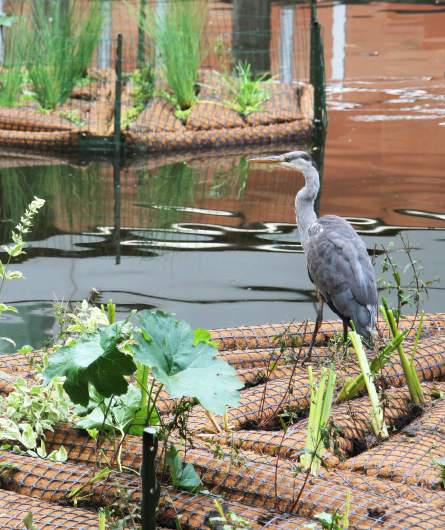
The biofilm grows rapidly, taking nutrients and other pollutants from the water, improving water quality by reducing the nutrient supply for phytoplankton growth, and hence reducing algae blooms. The biofilm also readily adsorbs toxic pollutants dissolved or suspended in the water. Ultimately, the biofilm sloughs and becomes incorporated into lake sediments. Some nutrients (approximately 20%) are also incorporated into the planted vegetation during active growth that become incorporated into the wetland media. Floating wetlands also reduce high water temperatures from shade. The degree of water quality improvement depends primarily on the floating wetland area in relation to the water body area, but also depends on nutrient concentrations, water currents, temperature, and dissolved oxygen.
Projects! Projects!
by Rob Zisette

Project funding provided in part by donations in memory of Taiga Hinckley.
Friends of Green Lake is currently working on projects to benefit Green Lake and its users. Come to our meeting or click on the following projects to learn more about them.
 Floating Wetlands
Floating Wetlands
Install two floating wetlands in shallow areas of the lake to provide native waterfowl habitat on the surface and fish habitat underneath, and to improve water quality by their nutrient uptake. Three alternative sites have been proposed with the preliminary design of each wetland to be approximately 66 feet long by 8 feet wide. Click here to read more.

Concept for a flat marker, starting with GL followed by a 2 digit number.
Path Emergency Markers
Install small markers every 150 feet along the Green Lake footpath with unique numbers whose locations are registered with Seattle Emergency Services. The markers would greatly shorten 911 call response time from current locating problems associated with the lack of visible street signs or landmarks. Click here to read the emergency marker project document.
Floating Wetlands Project
by Rob Zisette
Floating treatment wetland systems (floating wetlands) are engineered, vegetated rafts made of natural or inert materials that mimic floating bog mats. Root systems of the planted vegetation extend deep into the water and become covered with a biofilm comprised of a variety of microbes (algae, bacteria, fungi, and protozoans). The biofilm grows rapidly, taking nutrients and other pollutants from the water, improving water quality by reducing the nutrient supply for phytoplankton growth, and hence reducing algae blooms. The biofilm also readily adsorbs toxic pollutants dissolved or suspended in the water. Ultimately, the biofilm sloughs and becomes incorporated into lake sediments. Some nutrients (approximately 20%) are also incorporated into the planted vegetation during active growth that become incorporated into the wetland media. Floating wetlands also reduce high water temperatures from shade. The degree of water quality improvement depends primarily on the floating wetland area in relation to the water body area, but also depends on nutrient concentrations, water currents, temperature, and dissolved oxygen.
Read More »Friends of Green Lake Says Thank You to All Who Donated in Memory of Taiga

The Friends of Green Lake (FOGL) is a non-profit organization whose mission is to ensure a healthy lake for wildlife and recreation (https://friendsofgreenlake.org). FOGL is receiving approximately $9,000 in donations in memory of Taiga Hinckley who was tragically lost on the lake July 4, 2018 (https://www.gofundme.com/taigahinckley). FOGL members have considered a wide variety of projects for these funds and have met with Taiga’s family to discuss project ideas and understand their interests. Together, we have selected two potential meaningful Taiga projects: Turtle Viewing Platform and Floating Wetlands. These projects are briefly described to provide Seattle Parks and Recreation (SPR) with our initial concepts for consideration by SPR regarding project feasibility and the potential for SPR funding and staff support.

